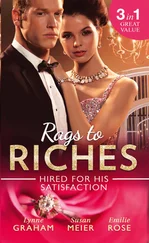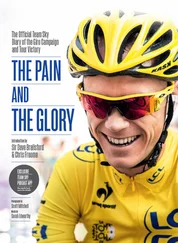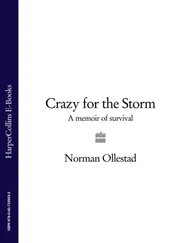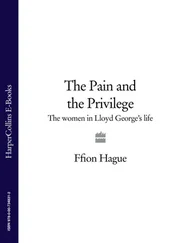2. The Drunk in the Dance Hall
I COULD NEVER learn to dance. At different times during the 1950s my mother, my first girlfriend, and the instructors employed by two separate schools of ballroom dancing all tried to teach me, but to no avail. I am not by nature a clumsy person, yet somehow the effort to place my feet in the correct positions while holding a female person at close quarters and conducting with her an intermittent conversation — somehow, all this was too much for me. I went to a few dances as a young man and even dared sometimes to dance with some or another young female person. What am I saying? I never danced with anyone. I stumbled and tottered and tried to bluff my way around the dance floor, all the while praying for the music to stop, and I remain to this day grateful to the few young women, whoever they were, who glided backwards in front of me, keeping out of reach of my clodhopping feet.
I dared thus sometimes but mostly I preferred to lurk near the rear of the dance hall with the other young males who were reluctant or unable to dance. I knew that we were the male equivalents of wallflowers: those young women who sat through a dance because no one had claimed them as partners. Perhaps I even understood that we were cowards by comparison — the young women sat bravely alone while we males tried to hide ourselves in a pack. I wonder whether I sometimes tried to appear to be in earnest conversation with one of my companions, as though we had serious matters to settle before returning to the frivolity of the dance floor.
Nearly twenty years before my birth, my father hung about the rear of dance halls and, on one occasion at least, he had an earnest conversation with another of his kind. The previous sentence is perhaps misleading. My father’s interlocutor was like him in being a reluctant dancer but quite unlike him in being drunk. (My father was a lifelong abstainer.) Perhaps the other man had been drunk when he arrived at the dance, or perhaps some of the young men present had been drinking beer or spirits in the darkness outside the hall, as would have happened often in the country district where my father grew up. Regardless of what or where the man had been drinking, he must have been drunk indeed to have discussed what he discussed with my father at the rear of the dance hall.
I am writing not history but a batch of recollected impressions and daydreams. With only a single statistic to support me, I mention here one of the most noticeable changes in racing during my lifetime. From about the 1960s, when off-course totalisator betting was legalised and became widespread, the number of on-course bookmakers has dwindled and such expressions as ‘beating the bookmaker’ have become outmoded. Things were different indeed during my youth and, from what I’ve read and heard, things were mightily different before my time. I looked just now into the race book that I bought for two shillings on the cold day in June 1964 when I went to the races at Caulfield with the young woman who later became my wife. On the pages listing the bookmakers betting that day, 266 names appear. At the equivalent meeting this year, perhaps a tenth of that number might be counted.
The scale of betting seems also to have declined. Legalised off-course betting greatly increased the revenue of the racing clubs and more than compensated for the loss of gate takings from the smaller crowds. Much of the increased revenue went into the prize money paid to owners of winners and placed horses. For many years now, successful owners have been able to recoup a large part of their expenses from prize money alone. In the 1960s and earlier, the only way for an owner to show a profit was by betting. I knew a small-time owner in the 1950s who bet two hundred pounds on his horse whenever it started in a race. This was a very modest bet for an owner of those days, and yet its equivalent in today’s money would be more than ten thousand dollars. When one of the leading stables was confident of the chances of one of their horses, owner, trainer and stable followers would organise a so-called plunge. Commission agents well known to leading bookmakers would descend on the ring at a pre-arranged time and would place credit bets of hundreds or even thousands of pounds all at once and before the bookmakers could reduce their odds. In the great days of betting, the chief concern of the connections of a horse was to obtain the highest possible odds on the day when it stood the best chance of winning. Many a horse was ‘set’ for some or another race months in advance. The stewards did their best to ensure that every horse ran always on its merits or ‘tried’, but in most races the also-rans included horses that were ‘cold’ or ‘dead’—their jockeys were under instructions to have them finish in the ruck so that bookmakers would bet lucrative odds against them on the day when the owner, the trainer, and those in the know launched their plunge and the horse was at last allowed to show its true ability.
F. H. Slamen (Brown, yellow stripes and cap) owned a chain of newsagencies in the 1950s and also numerous racehorses that were spread among several trainers. It was said of Mr Slamen that he wanted his horses either to win or to run last. A typical horse bearing the brown and the yellow might start five or six times over a period of many months, finishing always well back. Then, with no warning, the same horse would one day be backed off the map, as the saying had it. To use another racecourse expression, they jumped out of trees to back the horse (meaning that they had been hiding beforehand in the foliage to avoid being seen by bookmakers who, if they had got wind of a plunge, would have offered much-reduced odds).
The bookmakers, of course, did not meekly await form reversals and fierce plunges. Leading bookmakers paid for information from track watchers at morning gallops and, according to rumour, from stable spies or disaffected employees. Trainers resorted to counter measures. Ray McLaren (Red, white sash and cap, blue sleeves), an astute trainer from Mentone, needing to give a certain horse one last trial against the clock before a betting tilt, took the horse — Fordell, I think it was — all the way to Pakenham and galloped it at noon on the deserted track.
My father often assured me that racing was even more noted for its plots and intrigues during his heyday, which ran from the early 1920s until the late 1930s. Small wonder, then, that he sat patiently beside a young drunk one night at the rear of a dance hall in the south-west of Victoria and pieced together the details of an elaborate plan. A certain horse from the Warrnambool district, a jumper with poor form, was going to be taken by rail to Sydney in a few weeks and be backed there at long odds to win a steeplechase. (Jumps races were still run in New South Wales at that time.) The rest of the story is easily told. My father travelled himself to Sydney and won several hundred pounds on the horse. (This was more than he could have earned in a year from the labouring jobs that he then worked at.) Yes, this much is easily told, and my father told it to me often, but I can only guess at the more interesting details. Who was the blabbing drunk? I don’t care to know his name, but I would dearly like to know how a pie-eyed loudmouth was privy to the plotting of a group of masterminds of the turf. Was he blurting out his precious information into the air around him before my father overheard him, or did he single out my father and whisper to him alone? Was he not dancing because he had arrived at the hall already drunk, or had he become drunk to hide his shyness or his incompetence as a dancer?
I can readily imagine a number of versions of the story, but if I know anything about my father I can state that he would have much preferred to sit and listen to the drunk than to ask some young woman onto the dance floor. Like me, he was hopeless at dancing and ill at ease in female company. Racing was often for him what it has been sometimes for me: a sort of higher vocation excusing us from engaging with the mundane.
Читать дальше












